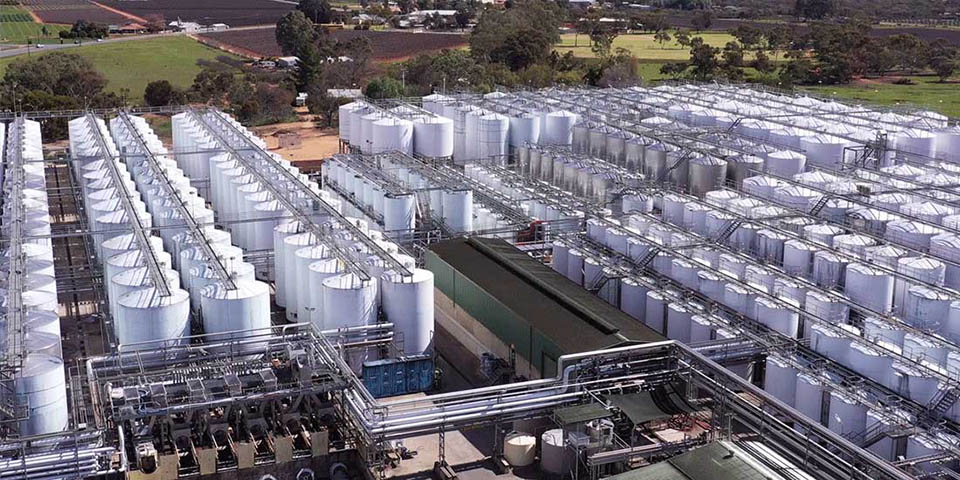
Can you tell the difference between wines made from Syrah grape and those made from Shiraz? There are people who will smugly tell you that there’s no difference, because Syrah and Shiraz are different names for the same grape. But they would be wrong. Life is rarely that simple. Let’s unravel the story.
The grape known as “Syrah” (SEE-rah) is traditionally associated with the Rhône region of France and known by that name throughout Europe as well as several New World countries. During the 18th and 19th centuries, the finest Syrah came from vineyards collectively known as Hermitage, named after a chapel on the hills above the town of Tain-l’Hermitage in northern Rhône. The Australians call the grape Shiraz (shee-RAZZ). The most plausible explanation for this change of name is that when the Scottish viticulturalist James Busby took some Syrah cuttings from Europe to Australia in 1831, he labelled them Scyras and Ciras, two local synonyms for Syrah.
Amazingly, the grape has about eighty other synonyms and these include Antournerein, Anzher Muskatnyi, Balsamina, Biaune, Bragiola, Damaszener blau, Di Entourneirein, Marsanne noir, Neretto di Saluzzo, Plant de la Bianne and many others. There are also a couple of dozen Syrah clones, known by prosaic reference numbers such as Syrah 19.1, Syrah 22, Syrah 471 and so on. Confusing, isn’t it? But more confusion is to come. Legend has it that the Shiraz grape originated in the Persian city of Shiraz, a regional trade center for over a thousand years. This is a tempting assumption, but there’s no documentary evidence that supports it.
In 1999, DNA profiling confirmed that the grape originated in the Rhône Valley; the offspring of two obscure French grapes, Dureza and Mondeuse Blanche. Today it’s the world’s sixth most planted grape and more is grown in France than anywhere else. And in case you’re wondering, “clones” are not as sinister as they sound. They’re created by grafting chosen grape vines onto different rootstock, usually to create higher-quality fruit or to improve resistance to disease. The practice has been used for centuries.
Let’s take a closer look at this most prolific of grapes. It makes some of the darkest red wine anywhere and the grapes have a tough skin, so they’re usually soaked in water before vinification. They have vigorous aromas and flavours of cherry, blueberry or plum, often with peppery qualities and sometimes hints of chocolate or tobacco. The grape is sometimes blended with other varieties to bring more balance to the body and the wine is nearly always red and dry.
And this brings us back – in a rather roundabout way – to the original question: the taste difference between Syrah and Shiraz. If the wine is labeled Syrah and comes from Europe, it will be dry with herby qualities and noticeable tannin and acidity. If it’s a warm-climate Syrah or Shiraz, it will be more fruit-forward, more spicy and probably slightly less dry and less tannic.
In some countries, notably Chile, South Africa and America, winemakers have started to use both names to indicate different styles of wine. Wines labelled Syrah indicate a drier, more restrained European style, while those labelled Shiraz are generally richer, less dry and more exuberant.
Sometimes we need a decent and relatively simple wine – a vin ordinaire as the French might say – to accompany everyday food. We need the wine to enhance food, not compete with it and while richly flavoured feasts might be well supported by equally sumptuous wines, simpler fare demands something more modest. I’m always on the hunt for decent wines at down-to-earth prices and this is one of them.
Vineyards Shiraz, (red) Australia. Bt 389 @ Lotus’s.
You may have noticed that the local branches of Lotus sometimes have quite interesting wines on sale. The brand is one of the many handled by the international company Accolade Wines which sells its products in over eighty countries. It’s the number one wine company in Australia and the UK and the fifth largest in the world. Among its portfolio are wineries such as Banrock Station, Berri Estates, Hardys, Kumala, Mud House. Paul Masson and Waipara Hills.
Even as I was starting to write my notes about this wine, the characteristic Shiraz aromas began to waft out of the decanter. Well, it’s not actually a decanter but a simple wine flask which cost me forty baht in the kitchen shop close to Foodland. It was cheap, but it does the job of aerating the wine. As expected, the wine is a dark crimson with an attractive aroma of cherry, damson and slightly jammy plum. At 13.5% ABV, this medium-bodied wine has a smooth mouth-feel and just the tiniest touch of acidity to give the body a bit of definition. It’s pretty dry of course, but not the toe-curling dryness you find in some European examples. I’d prefer to enjoy this easy-drinker slightly cool, a few degrees under the ambient temperature. It would make a reliable and thrifty choice for pasta in a rich sauce, outdoor BBQ fare or it could bring a new taste sensation to a simple beefburger or other snack food.
Shiraz is traditionally a red wine, but you might be wondering if white Shiraz exists. Well, it does, but you don’t see it often because few wineries make it. Thailand’s Monsoon Valley Winery produces a white Shiraz and so does Australia’s Banrock Station. Both of them are pink.






